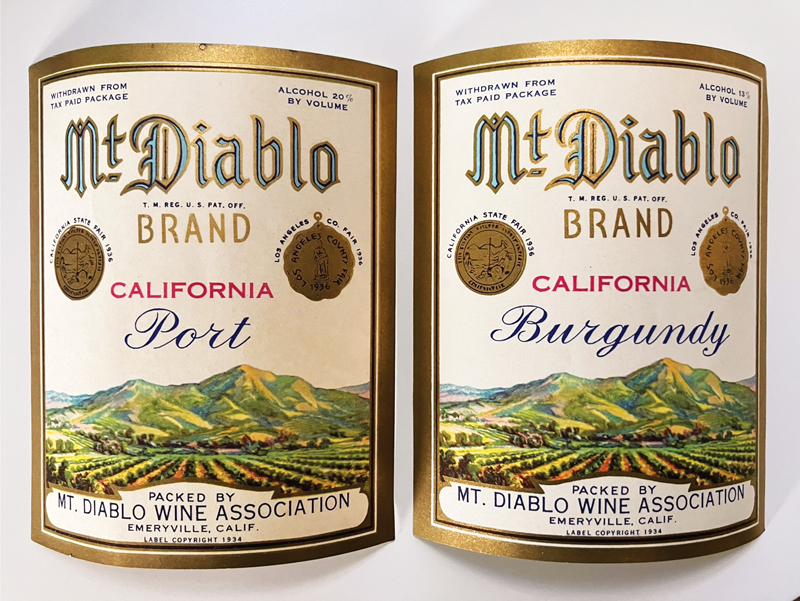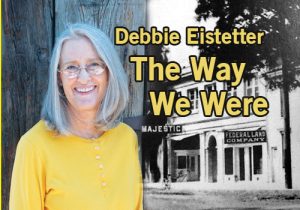Clayton wineries fell victim to aphids, Prohibition

 CLAYTON, CA (Dec. 18, 2023) — In the late 1800s, Clayton was home to three wineries known throughout the state and the East Coast for their excellent vintages.
CLAYTON, CA (Dec. 18, 2023) — In the late 1800s, Clayton was home to three wineries known throughout the state and the East Coast for their excellent vintages.
The smallest, Glen Terry Winery, won numerous awards within the state. Unfortunately it did not survive the phylloxera aphid invasion and the death of its owner in 1909.
Paul De Martini’s Clayton Winery, the second largest, sold white port, claret, cherry wines and grape brandy. The wines won first place at the 1899 Contra Costa Fair and a silver medal at the 1904 Louisiana Purchase Expo in St. Louis.
When demand for his products skyrocketed, De Martini bought more land and erected a winery building from stone quarried on Mount Diablo in 1885. The same building houses Clayton’s city offices today.
Mt. Diablo Winery was the largest and had phenomenal success for a time. It won a gold medal at the 1904 Expo in St. Louis. Their Golden State champagne received a grand prix at the 1913 International Exposition in Belgium.
The winery underwent several owners, name changes and financial drama. Owner-investors had bought more land, built a three-story stone winery and increased production from 25,000 gallons of wine in 1882 to 128,000 gallons in 1902. Production progressed at such a tremendous rate that they had to buy grapes from other farmers.
Phylloxera devastation
A hint of the tremendous loss grape growers experienced when the phylloxera aphid devastated California vines is illustrated by a newspaper ad submitted by Paul De Martini in 1910 announcing the sale of his uprooted vines as firewood.
Locally and throughout California, people replanted vineyards using American native rootstocks. However farmers limited replanting as they sought to make a profit with orchard crops like almonds, walnuts and fruit trees. De Martini planted several acres of almonds. He might have done this as a way to diversify his business and perhaps as insurance against the rising tide of temperance sweeping the nation.
Prohibition descended on the country with the passage of the 18th Amendment in 1920. Both the Clayton Winery and Mt. Diablo Winery purchased equipment to produce concentrated grape syrup after it became illegal to own equipment used to make wine in addition to its manufacture, sale and transportation.
The law permitted liquor and wine as medicine prescribed by a doctor or as sacramental wine in church. It also permitted citizens to make up to 200 gallons of wine a year for their personal use in their own homes. Alternatively, consumers could purchase “grape bricks” made of dried and compressed grape syrup that came with some directions. They needed to place the brick in a gallon of water, but users were “warned” not to add sugar and not to let it sit for longer than five days as these conditions would cause the mixture to ferment into wine.
The end
The Mt. Diablo Winery never reopened after Prohibition. However, in 1934 the De Martini family, along with other Contra Costa grape growers, sold their crops to the Mt. Diablo Wine Association housed in a large warehouse on San Pablo Avenue in Emeryville. They sold liquor in the front half of the building. They also made wine and sold it in the rear.
Franchesco Armanino served as the president and his son in law, John E. Sheehan, became vice president. John’s son remembers being cared for by his grandmother, Bianca Armanino, in Clayton in the De Martini stone winery building while his parents helped run the store in Emeryville.
Clayton’s wine era came to a close in 1940 when the De Martini property was sold and Black and White Liquor Stores purchased the Mt. Diablo Wine Association. The warehouse remains in use today selling liquor.
For more information on the Clayton Historical Society or to become a member, visit claytonhistory.org. The Clayton Museum is open 2-4 p.m. Wednesdays and Sundays at 6101 Main St. with free admission.

Debbie Eistetter
Debbie Eistetter has been a resident of Clayton for almost 30 years. She serves on the Board of the Clayton Historical Society and believes that history shows us the way to a more enlightened present and hopeful future. For more information about the CHS Museum please visit claytonhistory.org
